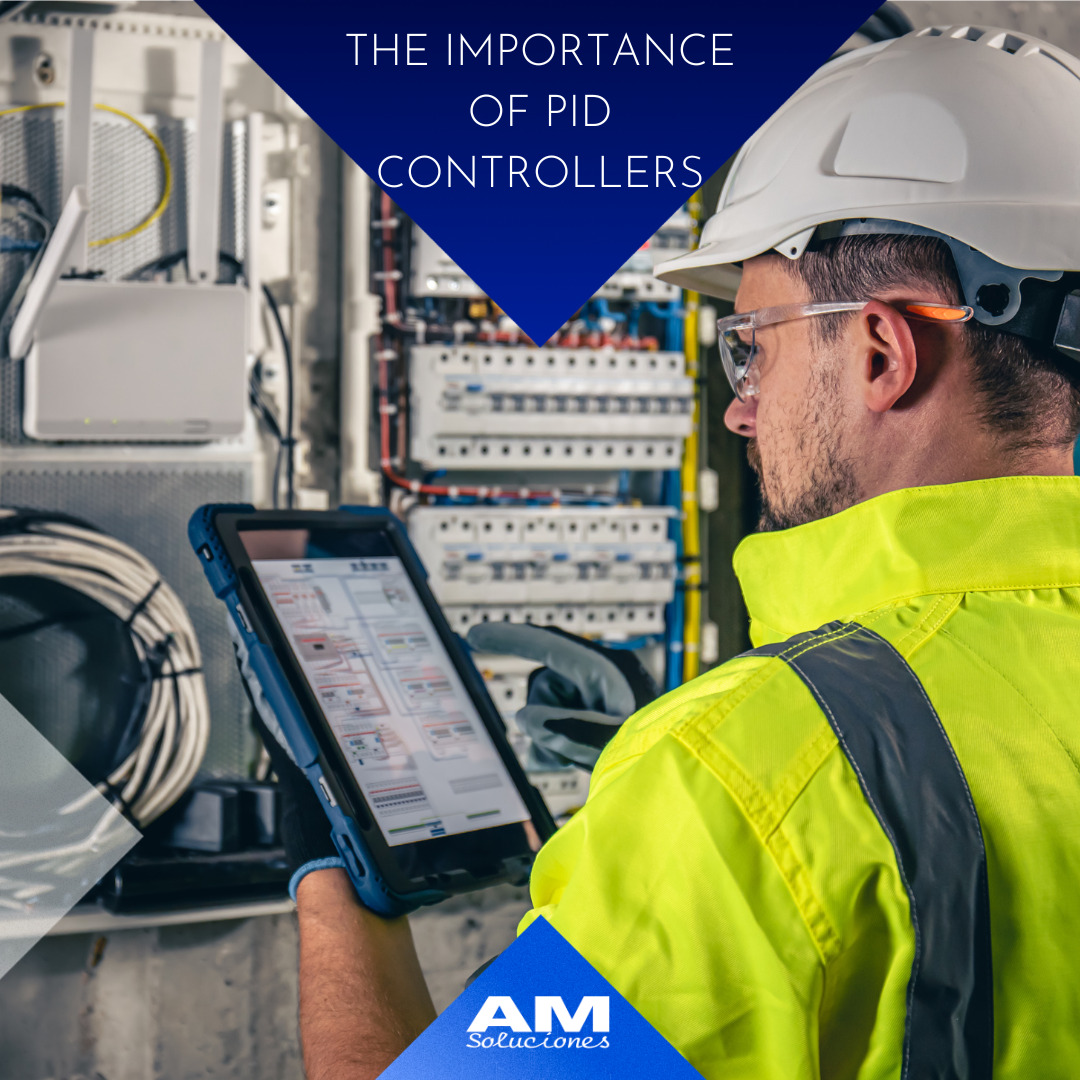
One of the biggest challenges in industrial processes is to reduce stoppage times during the production cycle. The constant flow, which you want to reach, can be affected by alarms or waiting in search of reaching the optimal conditions (temperature, pressure, level or flow) in each of the elements of the process. This downtime translates into energy and economic losses.
In this blog we tell how, at AM Soluciones, we use PID controllers to achieve and maintain the necessary conditions that allow us to achieve greater process performance.
The PID Controller is an element used in the industry to adjust magnitudes such as temperature, level, pressure or flow, automatically and precisely, based on feedback loop control. This can be used in any element of a factory where there is a sensor to measure said magnitude and a device that can influence it. For example, in a pipe circuit, the speed of a pump influences the flow rate measured by a flow meter.
In general, the PID controller is based on two elements and one parameter:
In order to have precise and stable control of the measured variable, the AM Soluciones team must adjust the following PID parameters:
PID controller is very useful for different applications. Some of them are:
A correct adjustment in the parameters of the PID controller allows to obtain the following advantages:
To conclude, PID controllers are a very useful and effective tool in the field of automation and process control. These controllers use a simple but effective mathematical algorithm that allows them to automatically adjust control parameters based on fluctuations in process variables. Furthermore, PID controllers are widely used in the industry due to their low cost and high reliability. Although there are other more advanced control techniques, PID controllers are still one of the most popular and effective options in many control processes.
At AM SOLUCIONES we have professionals with extensive experience in the use of PID controllers, which allows us to ensure the proper functioning of each industrial process.